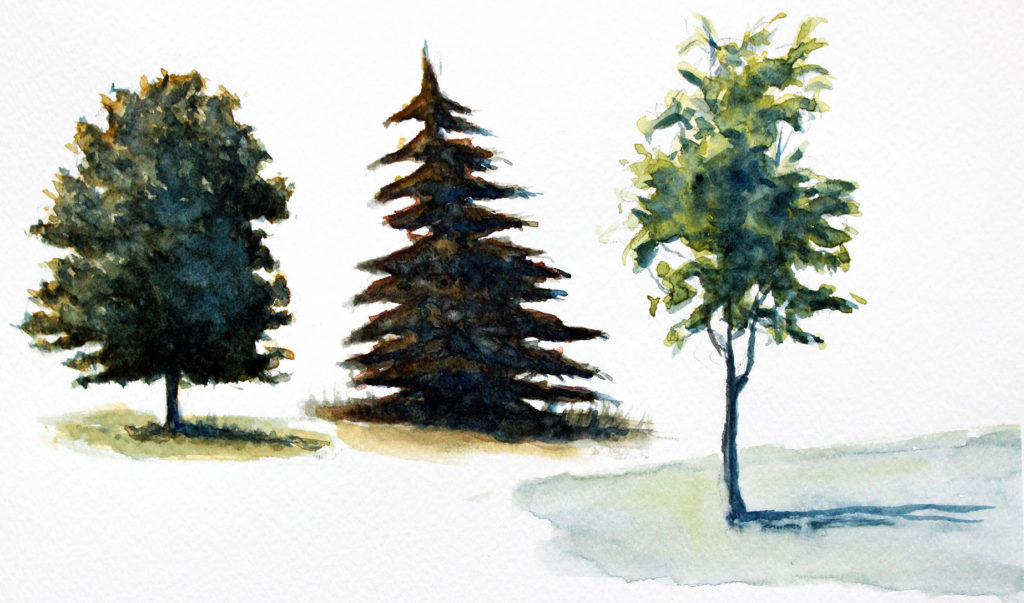 Consider your light source and be sure to carry it throughout your composition. Include shadows as a part of your sketch. This arrangement will become a design element of your work.
Consider your light source and be sure to carry it throughout your composition. Include shadows as a part of your sketch. This arrangement will become a design element of your work.
How To Paint Trees With Watercolor
Painting trees with watercolor can seem difficult, especially if you don’t know where to start. Watercolor painter, Chayim Shvarzblat will help you feel more comfortable in tackling your watercolor landscape paintings. The first thing he recommends is to draw a couple of miniature pencil sketches of your theme. This way you are going to plan your composition as well as the placement of the colors, from light to dark.
 Consider your light source and be sure to carry it throughout your composition. Include shadows as a part of your sketch. This arrangement will become a design element of your work.
Consider your light source and be sure to carry it throughout your composition. Include shadows as a part of your sketch. This arrangement will become a design element of your work.
 Consider your light source and be sure to carry it throughout your composition. Include shadows as a part of your sketch. This arrangement will become a design element of your work.
Consider your light source and be sure to carry it throughout your composition. Include shadows as a part of your sketch. This arrangement will become a design element of your work.